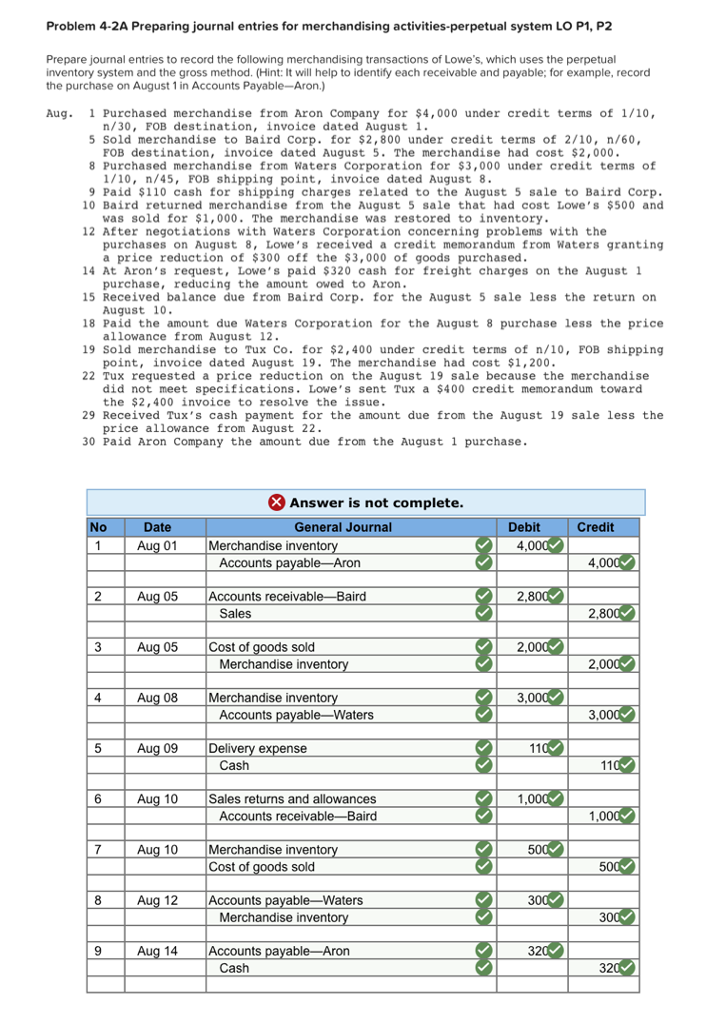
On the other hand, if the inventory increases, we can make the journal entry to record the cost of goods sold by debiting the cost of goods sold account and the inventory account instead and crediting the purchases account as below:Ĭost of goods sold if inventory increases: Account Debit Credit Cost of goods sold 000 Inventory 000 Purchases 000 In this case, we can make the journal entry to record the cost of goods sold by debiting the cost of goods sold account and crediting the purchases account and inventory account if the inventory balance decreases compared to the beginning inventory.Ĭost of goods sold if inventory decreases: Account Debit Credit Cost of goods sold 000 Purchases 000 Inventory 000
Under a perpetual inventory system plus#
Likewise, we can calculate the cost of goods sold with the formula of the beginning inventory plus purchases minus the ending inventory.Ĭost of goods sold formula: Cost of goods sold = Beginning inventory + Purchases – Ending inventory Under the periodic inventory system, we usually need to take the physical count of the ending inventory before we can determine and record the cost of goods sold to the income statement. Cost of goods sold under periodic inventory system

Hence, the balance of the inventory on the balance sheet will not be updated either as there will be no recording of a $1,000 reduction of inventory balance yet. On the other hand, if the company uses the periodic inventory system, there will be no recording of the $1,000 cost of goods sold immediately after the sale. Likewise, we can view the updated outstanding balance of inventory on the balance sheet as well as the updated figures of the cost of goods sold in the income statement if we use an accounting system such as QuickBooks. In this journal entry, the cost of goods sold increases by $1,000 while the inventory balance is reduced by $1,000. Sales revenue: Account Debit Credit Cash 1,500 Sales revenue 1,500Ĭost of goods sold: Account Debit Credit Cost of goods sold 1,000 Inventory 1,000 Under the perpetual inventory system, we can make the journal entry to record a $1,500 sales revenue and a $1,000 cost of goods sold on January 31 as below:

What is the journal entry to record the sale and cost of goods sold of the merchandise inventory above? We use the perpetual inventory system in our company to manage the merchandise goods. The original cost of merchandise goods was $1,000 in the inventory balance on the balance sheet. Sales revenue: Account Debit Credit Accounts payable/cash 000 Sales revenue 000Ĭost of goods sold: Account Debit Credit Cost of goods sold 000 Inventory 000 Example of cost of goods sold under perpetual inventory systemįor example, on January 31, we makes a $1,500 sale of merchandise inventory in cash to one of our customers. Hence, we usually see the cost of goods sold journal entry is made together with the sales revenue journal entry as below: Likewise, we usually record the reduction of the inventory immediately after making the sale. Under the perpetual inventory system, the inventory balance is constantly updated whenever there is an inventory in or an inventory out. Account Debit Credit Cost of goods sold 000 Inventory 000 Under the perpetual inventory system, we can make the journal entry to record the cost of goods sold by debiting the cost of goods sold account and crediting the inventory account. Cost of goods sold under perpetual inventory system And this is usually done in order to close the company’s accounts at the end of the period after taking the physical count of the ending inventory. However, if we use the periodic inventory system, we usually only make the journal entry to record the cost of goods sold at the end of the accounting period. every time there is a movement of inventory).
Under a perpetual inventory system update#
This is because we need to update the balance of the inventory in the accounting record as the perpetual inventory system requires the inventory balance to be updated perpetually (i.e.

In accounting, we usually need to make a journal entry to record the cost of goods sold after the sale of such goods or products if we use the perpetual inventory system in our company. In a manufacturing company, the cost of goods sold includes the cost of raw materials, cost of labor as well as other overhead costs that are used to produce the goods.Īnd, in the merchandising company, the cost of goods sold is the cost that the company pays to acquire the inventory goods before selling them further to the customers for a margin of profit. Journal entry to record cost of goods sold OverviewĬost of goods sold is the cost of goods or products that the company has sold to the customers.


 0 kommentar(er)
0 kommentar(er)
